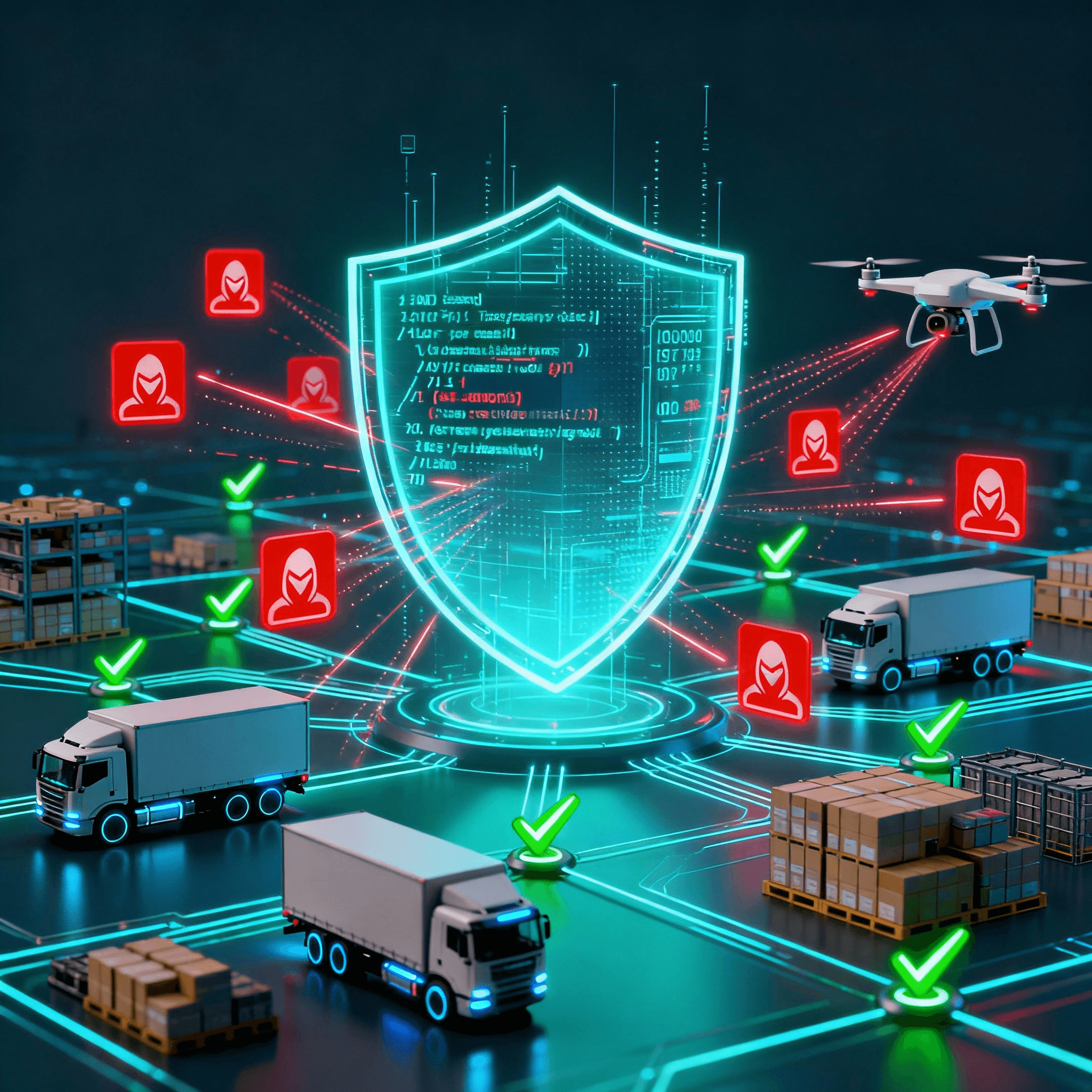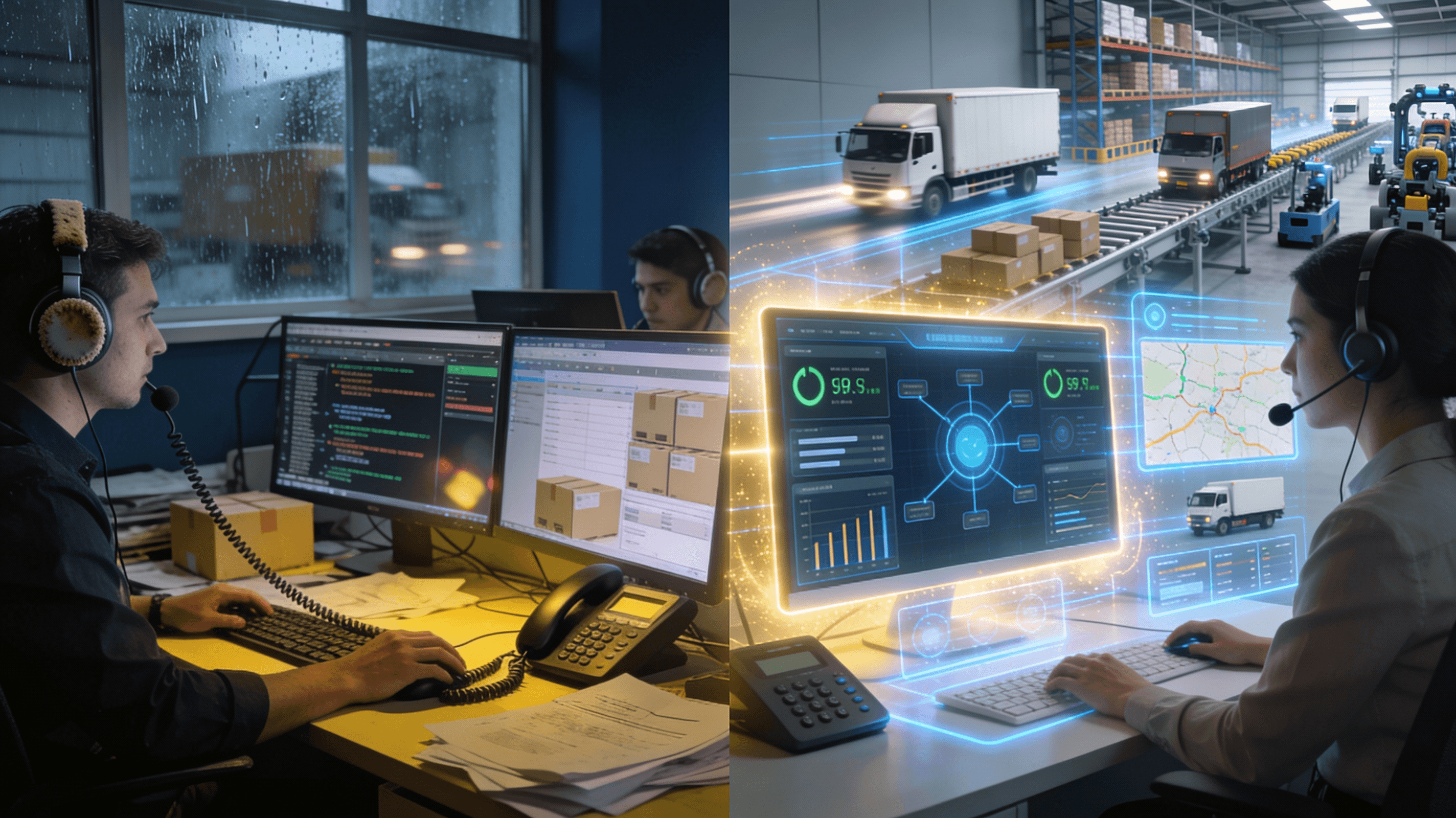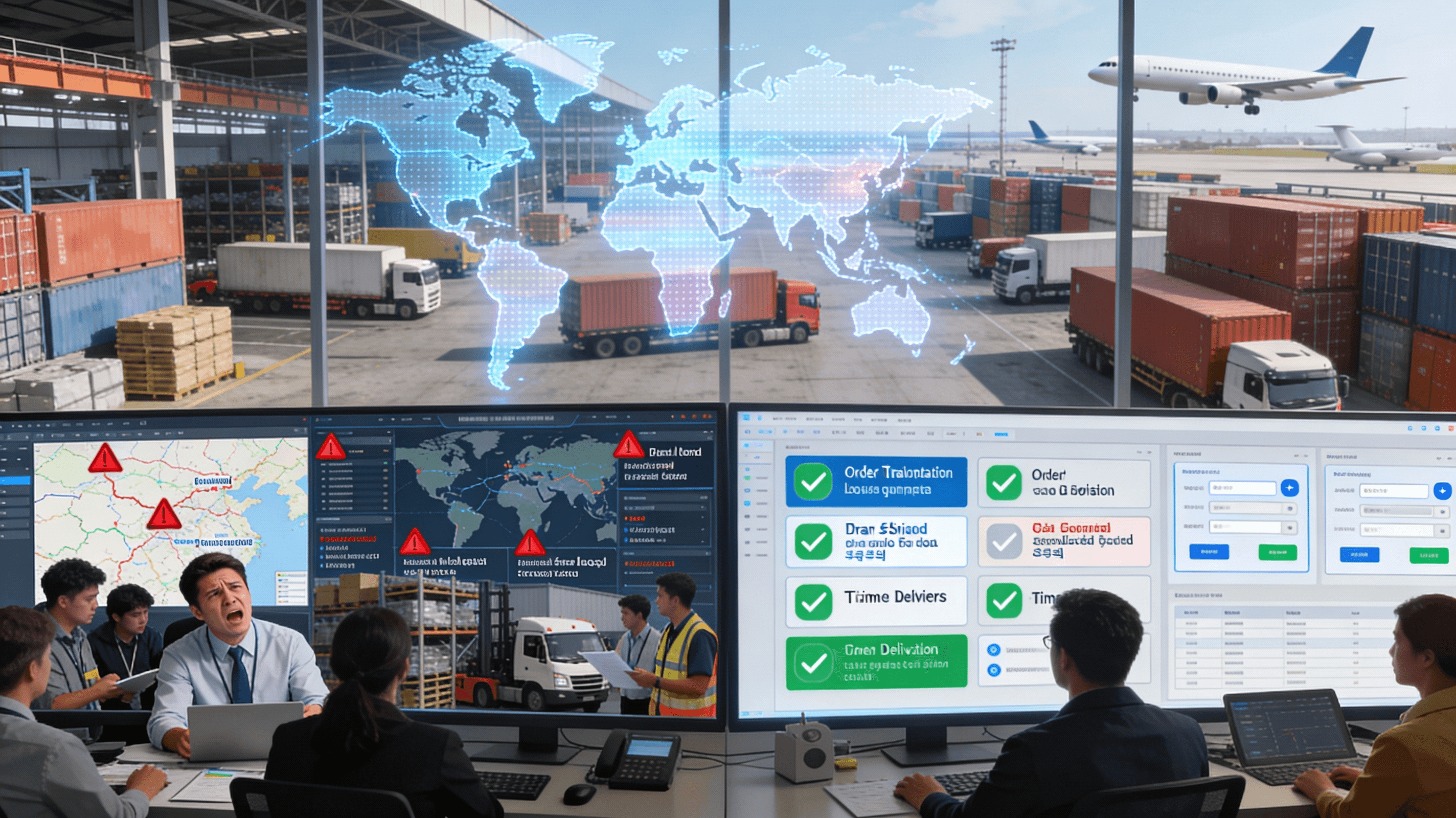Securing Autonomous Supply Chains: AI Logistics Cybersecurity 2025
Saturday, 25 Oct 2025
|
Introduction: The Double-Edged Sword of AI in Logistics
AI-powered supply chain attacks are projected to increase by 400% by the end of 2025, with each successful breach costing an average of $4.5 million, highlighting a critical new frontier of risk for the logistics industry. As AI agents and autonomous systems drive unprecedented efficiency, they also create novel vulnerabilities—from data poisoning that derails demand forecasting to adversarial attacks that trick autonomous vehicles. For logistics executives—CEOs, CXOs, and COOs—securing this AI-driven ecosystem is no longer a technical afterthought; it is a strategic imperative for ensuring operational continuity, protecting brand reputation, and maintaining a competitive edge in a market where 67% of leaders see autonomy as the future.
This comprehensive analysis explores the emerging cybersecurity threats facing autonomous supply chains and provides actionable strategies to protect against them, drawing on insights from ISACA, the Atlantic Council, and real-world security frameworks. We will dissect the new attack surface, detail a multi-layered defense strategy—including Zero Trust Architecture and AI-powered threat detection—and offer a practical implementation roadmap. As logistics barrels toward a 26.6% CAGR in AI adoption, leaders who build security into the fabric of their autonomous systems will not only mitigate risk but also forge a resilient, trustworthy foundation for market dominance.
The New Threat Landscape: Emerging Vulnerabilities in AI-Driven Logistics
The transition to autonomous supply chains, while boosting efficiency by 30-40%, expands the cyberattack surface beyond traditional IT perimeters, introducing vulnerabilities unique to AI and machine learning systems. Unlike conventional hacks targeting static infrastructure, AI-powered attacks manipulate the logic and data that drive autonomous decisions, making them harder to detect and far more disruptive. For executives, understanding these threats is the first step toward building a robust defense, as 2025 is predicted to be the "year of the AI-driven supply chain attack".
These vulnerabilities can cripple operations by turning trusted AI agents into internal threats. For example, a single compromised AI model could trigger a cascade of failures, from misrouting thousands of shipments to ordering millions in unnecessary inventory, causing financial and reputational damage that takes months to repair. Leaders must move beyond legacy security and embrace a new paradigm that protects the data, models, and interconnected APIs at the heart of the autonomous supply chain.
Data Poisoning Attacks
Data poisoning involves threat actors maliciously corrupting the data used to train AI models. In logistics, this could mean feeding a demand-forecasting agent falsified sales data to create artificial shortages or surpluses, leading to chaos in inventory management. An attacker could subtly alter historical shipping data to make a model favor a compromised carrier, effectively creating a backdoor for cargo theft. These attacks are insidious because the compromised model appears to function normally, but its decisions are based on a corrupted worldview, making detection with traditional methods nearly impossible.
Adversarial Attacks and Model Evasion
Adversarial attacks use carefully crafted, often imperceptible, inputs to trick an AI model into making a wrong decision. For example, a small, algorithmically generated sticker placed on a package could cause a computer vision system in an automated warehouse to misclassify it, sending it to the wrong destination. In transportation, minor alterations to road signs, invisible to the human eye, could be designed to deceive an autonomous truck's navigation system, causing it to take a dangerous or incorrect route. These evasion techniques exploit the blind spots in AI models, turning reliable automation into an unpredictable liability.
Model and Data Extraction
This type of attack focuses on intellectual property theft, where adversaries steal the AI model itself or the sensitive data it was trained on. A proprietary routing optimization model, which might represent a multi-million dollar R&D investment and a key competitive differentiator, could be exfiltrated by a competitor. Furthermore, through model inversion attacks, it's possible to reverse-engineer the training data, potentially exposing confidential customer information, pricing strategies, or supplier relationships, leading to severe regulatory fines and loss of trust.
Third-Party and Open-Source Vulnerabilities
The AI supply chain itself is a major risk vector. Many organizations build their AI systems using third-party APIs, pre-trained models, and open-source libraries like TensorFlow or PyTorch. If any of these upstream components are compromised—a scenario that has become increasingly common—the vulnerability is inherited by every logistics system using it. This creates a massive attack surface, where a single breach in a popular open-source project could impact hundreds of logistics companies simultaneously, leading to widespread disruptions.
Core Cybersecurity Strategies for a Resilient Autonomous Supply Chain
To counter these sophisticated threats, logistics leaders must adopt a multi-layered, AI-centric security strategy that moves from a perimeter-based defense to a model of pervasive, intelligent protection. This involves treating every component of the autonomous supply chain—from the data and models to the agents and their interactions—as a potential target and embedding security at every stage of the lifecycle.
Zero Trust Architecture (ZTA)
The foundational principle for securing autonomous systems is Zero Trust, which operates on the mantra "never trust, always verify". In an AI-driven logistics network, this means that no agent, user, or device is trusted by default, even if it is inside the network perimeter.
- Every API call between AI agents must be authenticated and authorized.
- Access to data and models is granted on a least-privilege basis, meaning agents can only access the absolute minimum required to perform their function.
- Network segmentation isolates critical AI systems, so that a breach in one part of the network (e.g., a customer service bot) cannot spread to a core system like route optimization.
AI-Powered Threat Detection
The most effective way to combat malicious AI is with "good" AI. AI-powered security platforms monitor agent behavior and network traffic in real time, establishing a baseline of normal activity. Using anomaly detection, these systems can instantly identify deviations that signal a potential attack, such as an AI agent suddenly attempting to access unusual data or a forecasting model producing statistically improbable results. This approach is 50% faster at detecting novel, AI-driven attacks than traditional, signature-based antivirus or firewall systems.
Secure AI Development Lifecycle (Secure SDLC)
Security must be integrated into the entire lifecycle of AI model development, not bolted on at the end.
- Data Provenance: Track the origin and lineage of all training data to ensure its integrity and prevent data poisoning.
- Adversarial Training: Intentionally train models on manipulated data to make them more robust against adversarial attacks.
- Vulnerability Scanning: Continuously scan AI code, libraries, and dependencies for known vulnerabilities using tools like Software Bill of Materials (SBOM).
- Model Explainability (XAI): Employ techniques that make AI decisions transparent and auditable, which helps in identifying and diagnosing security incidents.
A Proactive Governance and Implementation Framework
Transitioning to a secure autonomous supply chain requires a structured, top-down approach led by the C-suite.
Step 1: Conduct a Comprehensive Threat Model Assessment
Begin by identifying your most critical AI assets—be it a demand forecasting model, an autonomous routing agent, or a smart warehouse system. Map the entire AI supply chain, including data sources, third-party models, and integration points, to identify potential attack vectors and rank them by potential business impact. This assessment should inform your security priorities and budget allocation, aligning with the 90-day implementation roadmap for AI agents.
Step 2: Establish a Cross-Functional AI Security Team
AI security is not just an IT problem; it requires collaboration between cybersecurity experts, data scientists, logistics operators, and legal/compliance teams. This group is responsible for creating and enforcing AI security policies, overseeing model development, and managing incident response. By fostering a culture of security, organizations can reduce human-related errors, which are often the entry point for attacks.
Step 3: Implement a Layered Defense-in-Depth Strategy
No single security control is foolproof. A defense-in-depth strategy involves layering multiple security measures.
- Start by implementing Zero Trust principles for your most critical AI agents.
- Deploy an AI-powered threat detection system to monitor agent behavior in real-time.
- Enforce a Secure SDLC for all new AI projects, with mandatory security gates and code reviews.
- Encrypt all sensitive logistics data, both at rest and in transit, using strong cryptographic standards.
Step 4: Continuous Monitoring and "Red Teaming"
Security is an ongoing process. Continuously monitor AI systems for new vulnerabilities and anomalous behavior. Regularly conduct "red teaming" exercises, where an internal or external team simulates attacks on your AI systems to proactively identify weaknesses before real adversaries do. Use learnings from these exercises to update security controls and retrain AI models, creating a feedback loop of continuous improvement.
Explore More on Debales.ai
- Autonomous Rerouting AI: Instant Supply Chain Resilience 2025
- The AI Agent Maturity Assessment: Benchmarking Your Organization
- Multi-Agent Orchestration: Building Supply Chains That Think and Act Independently
- Agentic AI: Self-Directing Intelligence Beyond Automation
- Self-Healing Supply Chains: AI Systems That Detect and Resolve Disruptions
Fortify Your AI Logistics with Debales.ai
Don't let your autonomous supply chain become your biggest vulnerability. Partner with debales.ai to implement end-to-end cybersecurity strategies that protect your AI agents, data, and operations.
Schedule a Security Consultation
Conclusion: Building Trust in an Autonomous World
As logistics moves inexorably toward an autonomous future, cybersecurity must evolve from a reactive function to a proactive, strategic enabler. By understanding the unique vulnerabilities of AI systems and implementing a layered defense strategy rooted in Zero Trust principles, logistics leaders can protect their operations from a new generation of sophisticated threats. Securing the autonomous supply chain is not merely about preventing attacks; it is about building a foundation of trust that ensures resilience, maintains customer confidence, and unlocks the full transformative potential of AI in logistics.


